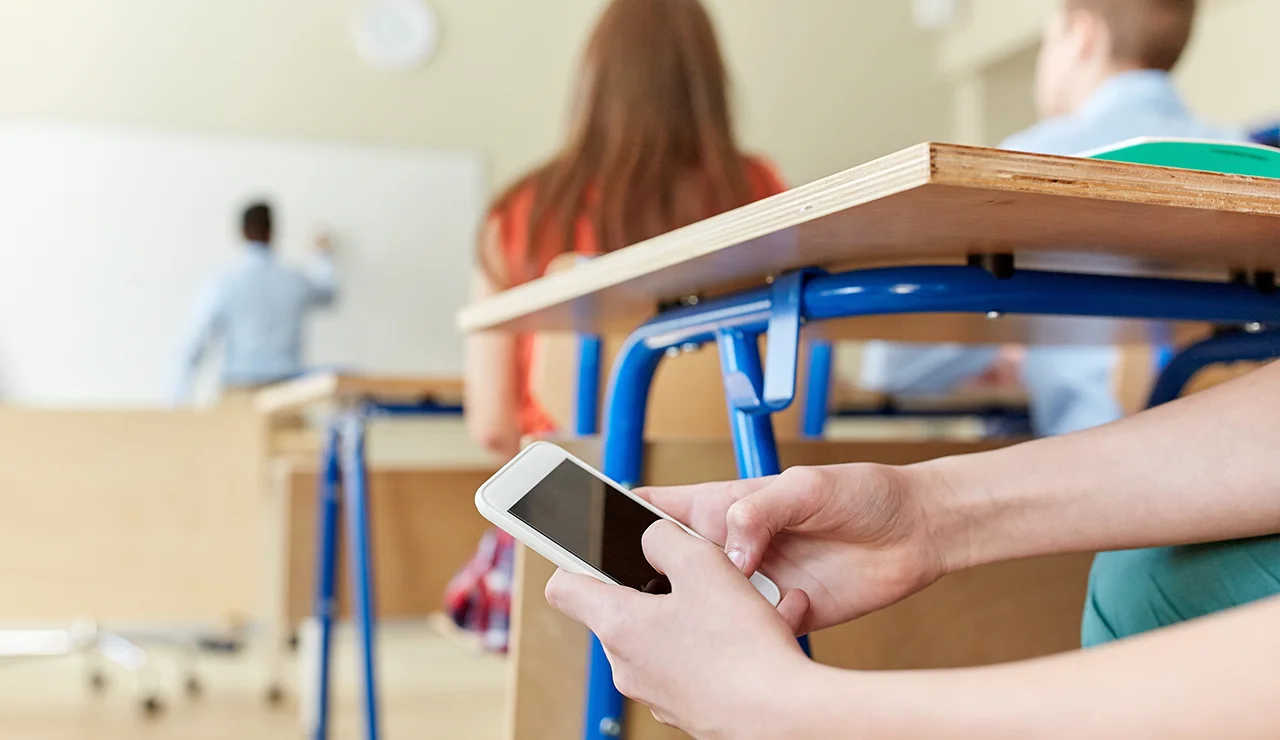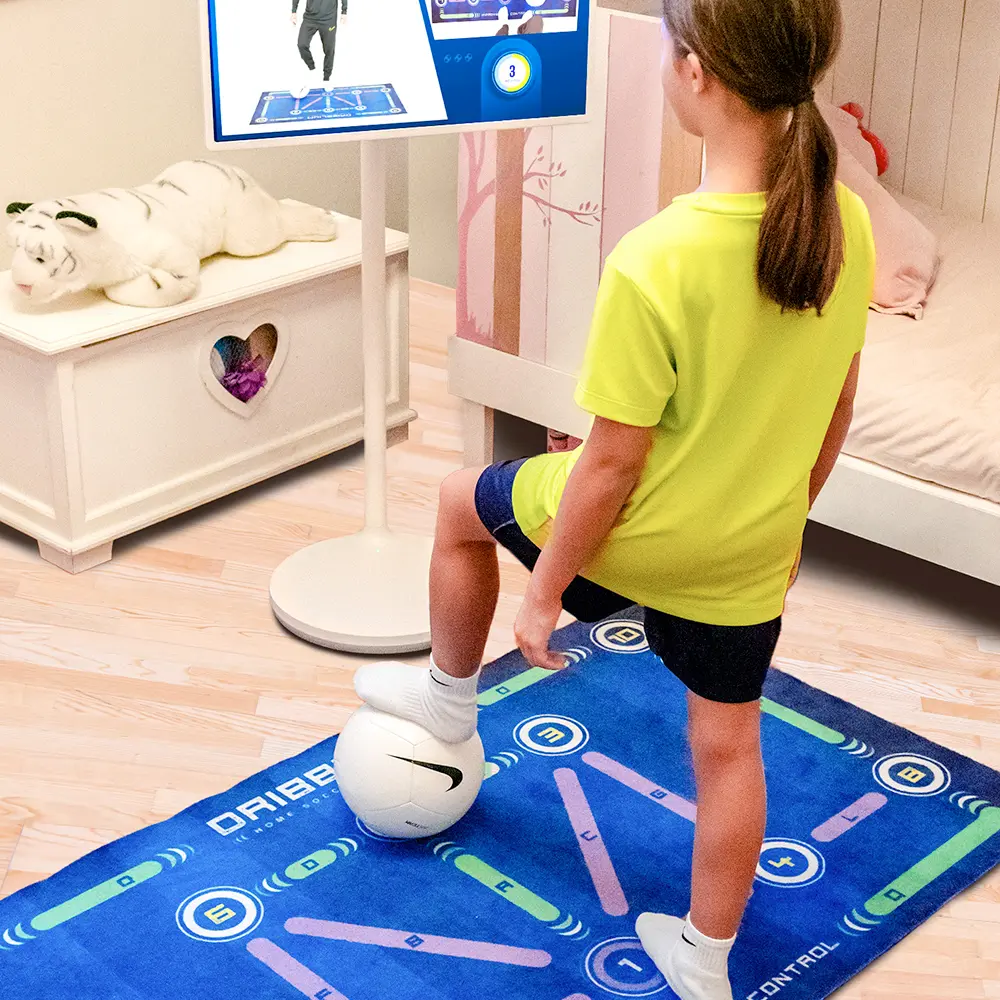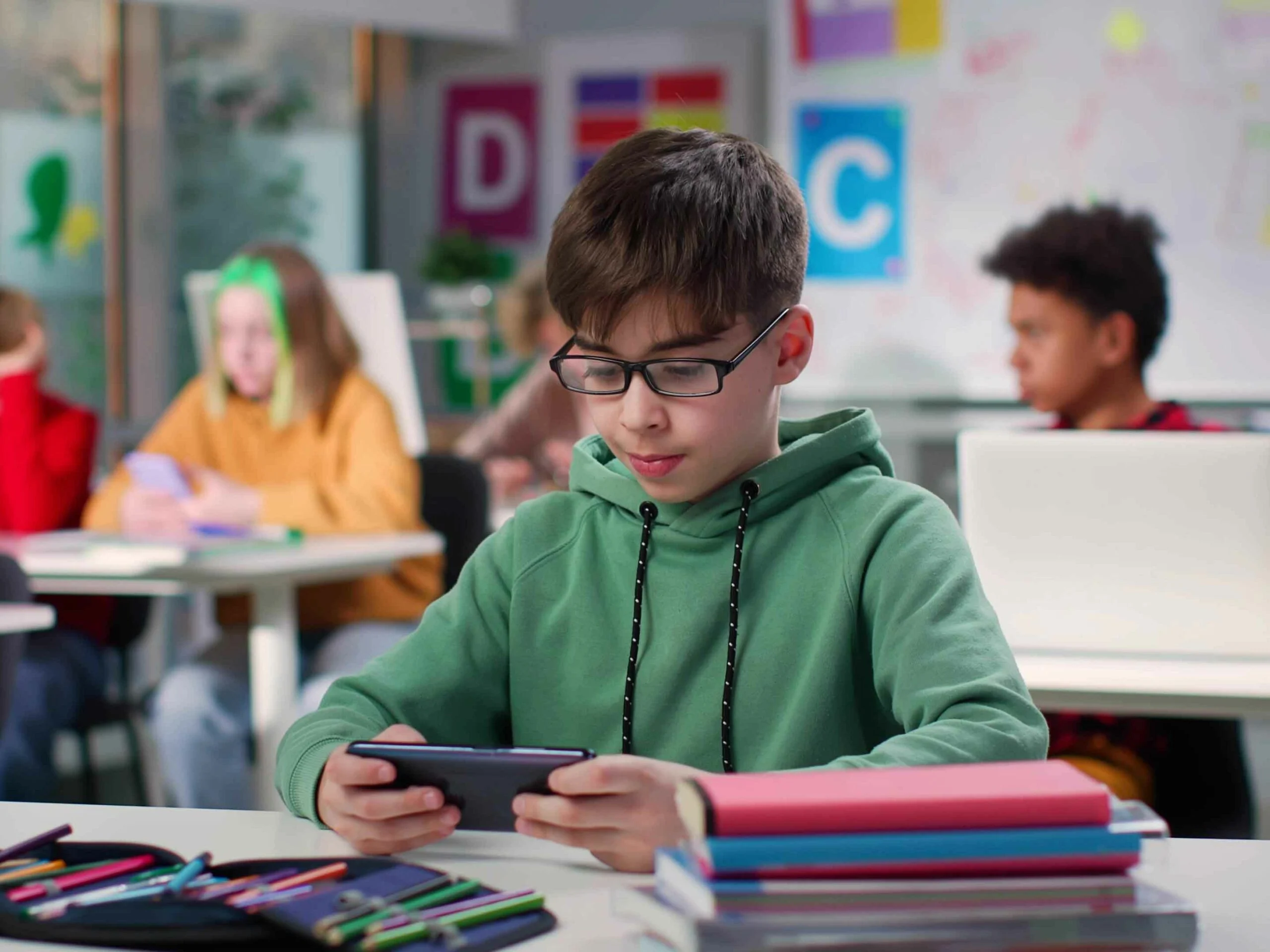Cell phone addiction in children: Confirming this, research from the University of Bologna found that 65 percent of children who use smartphones before the age of 12 develop problems with attention and concentration. In 2023, the Italian government updated its guidelines for primary and secondary schools, reiterating the ban on the use of mobile devices during school hours.
This recent legislation emphasizes the need to create an educational environment that fosters concentration and social interaction, limiting digital distractions and promoting more conscious use of technology among young students.
Cellphones in the Classroom: A Widespread Phenomenon.
In recent years, the use of cell phones in the classroom has become a widespread phenomenon. According to a 2022ISTAT study, about 70 percent of Italian middle and high school students own a smartphone and regularly bring it to school. While these devices can be a useful educational tool, they can also distract students and negatively affect school performance. Studies conducted by MIUR show that excessive cell phone use in the classroom can reduce attention and impair learning.

Cell phone ban: A Necessity?
Banning cell phones in schools is a measure adopted by several countries to try to limit distractions and promote a more focused learning environment. However, the issue is complex and requires in-depth reflection on what best practices should be adopted. For example, in Finland, where digital education is advanced, schools balance the use of technology with moments of traditional learning, demonstrating that a balanced approach can be effective.
The UN Recommendations
The Global Impact of Smartphone Use among Minors.
The United Nations has expressed concern about the widespread use of smartphones among children, stressing the importance of global regulation. In a recent report,
Recommendations include the need for increased awareness among parents and educators about the risks associated with excessive use of technology and the importance of establishing clear rules about the use of mobile devices, both at home and at school. The goal is to create a safe and healthy environment in which children can grow and develop without the pressures and distractions derived from uncontrolled smartphone use. (UN Italy, 2023)
The Italian Legislation
Ban on the Use of Smartphones and Tablets under 12 Years of Age
In Italy, legislation on cell phone use among minors has seen major developments in recent years. In 2021, a bill was submitted that aims to
Confirming this, research from the University of Bologna found that 65 percent of children who use smartphones before the age of 12 develop problems with attention and concentration. In 2023, the Italian government updated its guidelines for primary and secondary schools, reiterating the ban on the use of mobile devices during school hours. This recent legislation emphasizes the need to create an educational environment that fosters concentration and social interaction, limiting digital distractions and promoting a more conscious use of technology among young students.
Cellphones in School: The New Guidelines of the MIUR
MIUR, based on the above, has updated the guidelines regarding the use of cell phones in schools. According to the new guidelines, the use of cell phones in primary and secondary schools is banned, with the aim of improving the quality of teaching and reducing distractions. The Minister of Education said these measures are necessary to create a more effective and safer learning environment. These new guidelines reflect a growing consensus on the importance of limiting the use of mobile devices in school settings to promote better concentration and interaction among students.
Penalties for Failure to Comply with the Prohibition
Failure to comply with the ban on cell phone use in schools can result in disciplinary sanctions. These measures are in place to ensure that the rules are followed and to prevent student misbehavior. Sanctions can range from simple warnings to more severe suspensions, depending on the severity of the violation. According to a 2021 report, about 20 percent of Italian high school students were sanctioned for misuse of cell phones in class.
International Standards
France: A Model of Reference
France is one of the countries that has taken strict measures regarding the use of cell phones in schools. Since 2018, cell phone use has been banned in primary and secondary schools, with the aim of improving student concentration and reducing distractions. This ban has been welcomed by many educators and parents, who have noticed an improvement in school performance and student behavior. According to a survey by the French Ministry of Education, 85 percent of teachers reported a reduction in classroom distractions after the implementation of the ban.
Other European countries
Other European countries have also implemented similar regulations. In
United States: A Diversified Situation
In the United States, regulations on cell phone use in schools vary from state to state and district to district. Some schools have adopted very strict policies, while others allow freer use of mobile devices. This diversity reflects different educational philosophies and the varying needs of local communities. For example, in 2019, the New York City school district reintroduced a ban on cell phones in schools after suspending it for several years following an increase in distractions and disciplinary problems.
China: Strict Restrictions and Digital Control
China has taken a particularly strict approach to cell phone use among minors. Chinese authorities have implemented a series of measures to limit young people’s access to and use of mobile devices. In 2021, the government introduced regulations limiting the use of smartphones by minors to a maximum of 1.5 hours per day on weekdays and 3 hours on weekends. In addition, the use of these devices during school hours is prohibited.
Chinese schools, at the behest of the Ministry of Education, have adopted strict policies to prevent students from bringing cell phones into classrooms, except for specific authorized needs. The government has justified these restrictions by citing mental health concerns among young people, with studies showing an increase in anxiety and smartphone addiction among Chinese adolescents.
These measures are part of a broader Chinese government effort to control technology use among young people, which also includes restrictions on the use of online games and social media. According to a report by China’s Ministry of Education, these policies have already shown positive results, with reduced time spent on digital devices and improved academic performance in several pilot schools
Educational Implications
Benefits of Using Mobile Phones at School
The use of cell phones in school can have several benefits if managed appropriately. For example, mobile devices can be used as teaching tools to access online educational resources, conduct research, and participate in interactive lessons. In addition, cell phones can facilitate communication between students and teachers and promote collaborative learning. According to a study by the University of Milan, controlled use of cell phones in the classroom improved student interaction and participation by 25 percent.
Disadvantages of Using Cell Phones in School
However, the use of cell phones at school also has several disadvantages.
This heavy use can also cause posture problems, eyestrain, and sleep disturbances. Smartphone addiction, in particular, has been associated with higher levels of stress and anxiety. Therefore, while cell phones can be useful educational tools, it is essential to manage their use to avoid these negative effects and ensure a balanced and productive educational environment.
Social Implications
Smartphone Addiction: A Growing Problem.
Smartphone addiction is a growing problem among young people. Excessive use of mobile devices can lead to mental health problems, such as anxiety and depression. Adolescents who spend many hours a day on smartphones are particularly vulnerable to developing anxiety symptoms. In addition, unlimited access to social media can expose minors to inappropriate content and risky behavior. Continued exposure to this content can negatively affect children’s emotional and psychological well-being, leading to feelings of isolation and stress. It is therefore crucial to promote more conscious and limited use of smartphones among young people in order to protect their mental health and foster balanced development
The Role of Parents and Educators
Parents and educators have a crucial role in managing cell phone use among minors. It is essential that adults set clear rules and show an example of responsible use of technology. Educating children and adolescents about the risks and benefits of mobile devices is critical to promoting balanced and informed use. A 2021 survey revealed that 70 percent of Italian parents believe it is important to set clear limits on their children’s use of cell phones. This indicates a growing awareness of the need to regulate access to digital devices to protect young people’s well-being and foster a healthy growth environment. Promoting open and ongoing dialogue about technology use can help develop healthier and more responsible habits.

Teaching Responsible Smartphone Use and Promoting Exergames
To combat the excessive use of smartphones among minors, one effective tip is to encourage the use of exergames, which combine digital fun with physical activity. These games, such as
Dribblium, in particular, is a revolutionary game that encourages children to exercise by combining physical activity with the development of motor skills and coordination. This makes it not only fun, but also mentally stimulating. Designed to be inclusive, Dribblium allows children of all ages and abilities to participate and have fun, promoting a healthy and engaging play environment.
Parents and educators can integrate these games into young people’s daily routines, thus encouraging a more conscious and balanced use of technology. Exergaming provides an innovative solution to combat sedentariness and its negative effects by offering kids a fun way to stay active. These games can also improve coordination and balance, as well as stimulate the heart and muscles, contributing to overall physical well-being.
In addition, exergaming can improve socialization and teamwork among children, creating a healthier and more balanced growth environment. Playing together with others, both virtually and physically, can strengthen social skills and promote cooperation and mutual respect.
Promoting exergames is therefore a winning strategy to reduce smartphone addiction and encourage a more active and healthy lifestyle. By teaching children to use technology in a positive and constructive way, it can help
Conclusion
Cell phone use among minors is a complex issue that requires a balanced and informed approach. Italian and international legislation offers different perspectives on how to manage the use of mobile devices in schools and in the daily lives of young people. It is essential that parents, educators and legislators work together to ensure that children and adolescents can benefit from the opportunities offered by technology without incurring its risks.
Conscious and regulated use of cell phones among minors can contribute to a healthier and more productive educational environment, reducing distractions and promoting the psychological and social well-being of young people. Legislation, both Italian and international, is an important step in this direction, but it is essential to continue monitoring and adapting policies according to technological developments and emerging educational needs.
Faq
What are the main negative effects of excessive smartphone use among minors?
Excessive smartphone use among minors causes anxiety, depression, sleep disturbances, poor concentration, social isolation, and low school performance.
What are exergames?
Exergames are video games that combine physical activity and play, encouraging players to move and exercise.
What benefits do exergames offer?
Exergames improve physical health, motor coordination, promote socialization, reduce sedentariness, and make exercise fun.
Why is it important to limit smartphone use among minors?
Limiting smartphones among minors prevents anxiety, depression, sleep disorders, social isolation and improves concentration and school performance.
How can parents teach their children to use smartphones wisely?
Parents can set clear rules, monitor use, discuss risks, and lead by example with responsible use.
What are the risks of unlimited access to social media for minors?
Unrestricted access to social media can expose minors to cyberbullying, inappropriate content, social pressure, sleep disorders, and cell phone addiction
What are the legal consequences for parents who do not restrict their children’s smartphone use in Italy?
Currently, there are no specific legal consequences for parents, but schools can apply disciplinary sanctions to students for misuse of devices during class.
How can schools promote responsible use of technology?
Schools can integrate digital education, establish clear policies, promote offline activities and collaborate with parents.
At what age is it appropriate to give a smartphone to a child?
There is no universal “right” age, but many experts suggest waiting until at least age 12-13, tailoring the decision to the child’s maturity and family background.







